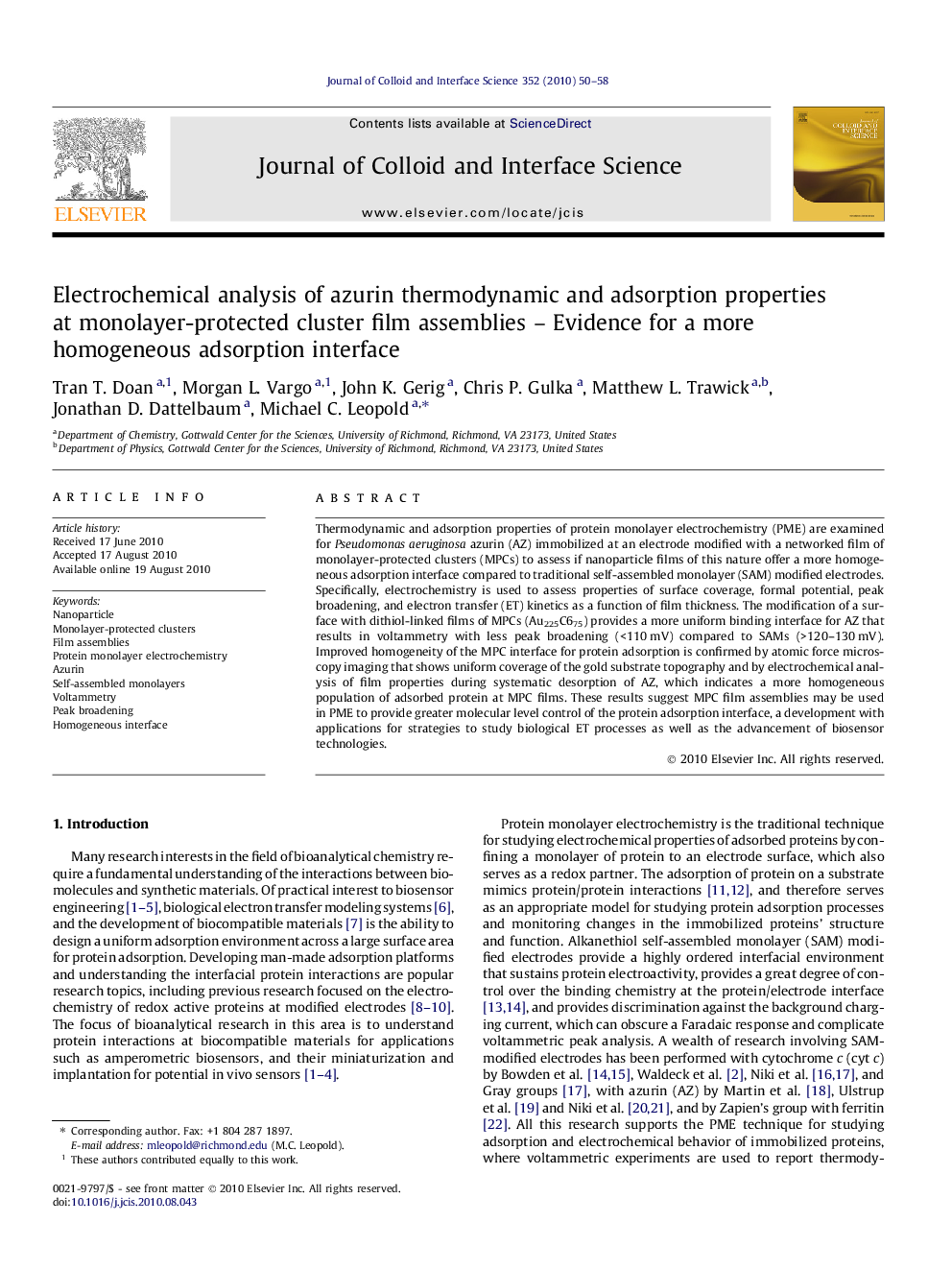| Article ID | Journal | Published Year | Pages | File Type |
|---|---|---|---|---|
| 609263 | Journal of Colloid and Interface Science | 2010 | 9 Pages |
Thermodynamic and adsorption properties of protein monolayer electrochemistry (PME) are examined for Pseudomonas aeruginosa azurin (AZ) immobilized at an electrode modified with a networked film of monolayer-protected clusters (MPCs) to assess if nanoparticle films of this nature offer a more homogeneous adsorption interface compared to traditional self-assembled monolayer (SAM) modified electrodes. Specifically, electrochemistry is used to assess properties of surface coverage, formal potential, peak broadening, and electron transfer (ET) kinetics as a function of film thickness. The modification of a surface with dithiol-linked films of MPCs (Au225C675) provides a more uniform binding interface for AZ that results in voltammetry with less peak broadening (<110 mV) compared to SAMs (>120–130 mV). Improved homogeneity of the MPC interface for protein adsorption is confirmed by atomic force microscopy imaging that shows uniform coverage of the gold substrate topography and by electrochemical analysis of film properties during systematic desorption of AZ, which indicates a more homogeneous population of adsorbed protein at MPC films. These results suggest MPC film assemblies may be used in PME to provide greater molecular level control of the protein adsorption interface, a development with applications for strategies to study biological ET processes as well as the advancement of biosensor technologies.
Graphical abstractElectrochemistry and atomic force microscopy were used to evaluate the interfacial homogeneity of monolayer-protected cluster (MPC) film assemblies used as azurin protein adsorption and electron transfer platforms.Figure optionsDownload full-size imageDownload high-quality image (111 K)Download as PowerPoint slideResearch highlights► MPC films provide a more homogeneous interface for azurin protein electrochemistry. ► AFM shows complete coverage by MPC films and minimizes gold topographical effects. ► MPC interface promotes a more uniform population of adsorbed protein. ► Azurin voltammetry at MPC films is more ideal than at traditional SAM platforms. ► MPC films can be used to overcome protein resistant surfaces.
